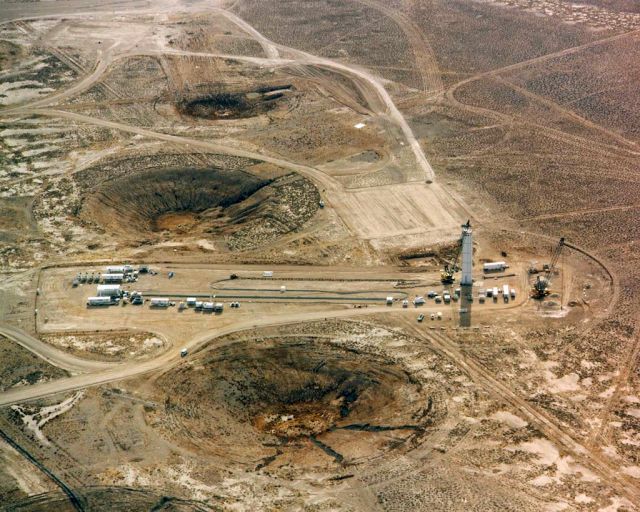Some rock drills and draglines are automated too. Australia is leading the way on mine automation, particularly when it comes to remote controls that attach to excavators manufactured elsewhere.
Rio Tinto is a big supporter: see the Rio Tinto Center for Mine Automation at The University of Sydney.
Underground automation isn't advancing as fast as the robotization of surface mining, but the challenges are greater. For example, GPS can't be used underground so precise navigation is a challenge.
Robotic underground mining is moving forward most rapidly in connection with a technique called block caving, where miners start by going in deep to dig access tunnels under the ore body, then moving upward to carve a network of drifts, shafts and V-shaped funnels (from copper.com.au):
The result is to make giant hoppers that receive ore falling off the roof of underground chambers, and direct it into lower drifts for collection and hauling by vehicles called LHDs, short for load-haul-dump. Here's a paper on automating an LHD.
Block caving works best for ore that is so weak and fractured it will collapse as soon as there's an opening below it, or else can be weakened ahead of time by fracking.
Rather than follow a narrow high-grade vein of ore like a stoping operation in the old West, which tunneled upward to carve a notch in the earth sometimes only a few feet wide but quite deep, block caving takes out entire volumes that are wide as well as deep: hundreds of feet across.
Removing millions of tons of ore over decades eventually opens a giant crater visible at the surface after the void breaks through to the surface. Similar effects were visible at the Nevada Test Site when A-bomb blasts were set off within a thousand feet or so under the surface: while the blast didn't cause any immediate disruption of the surface, it did make a big, deep cavern that later fell in, and opened a crater up top. From the Nuclear Weapons Archive:
There's a block-caving diamond mine planned in Australia -- to go under an open pit called Argyle -- that could make the Mines of Moria look shrimpy: this cavern could be a thousand feet high and 1,500 feet long before it falls in.
Block and panel caving is hard to visualize, but here's a Youtube video about the Argyle plan.
Because block caving eventually takes out all the ore lying above the hoppers, it's easier to automate than a mine that has to follow a narrow, twisting vein of high-grade ore.
Robot drilling and robot hauling also offers safety advantages since ceilings of the block cave sometimes collapse in bigger volumes than planned, which, depending on the underground layout, can cause brief but very violent windstorms along the drifts and shafts (windspeeds up to 250-300 mph) called air blast.
There have been dozens of air-blast events in coal and metal mines. One at the North Parkes Mine in 1999 killed four men. Robot drills are also safer when drilling and blasting apart giant boulders that fall into the hoppers and act like plugs to block the flow of more rock.




No comments:
Post a Comment